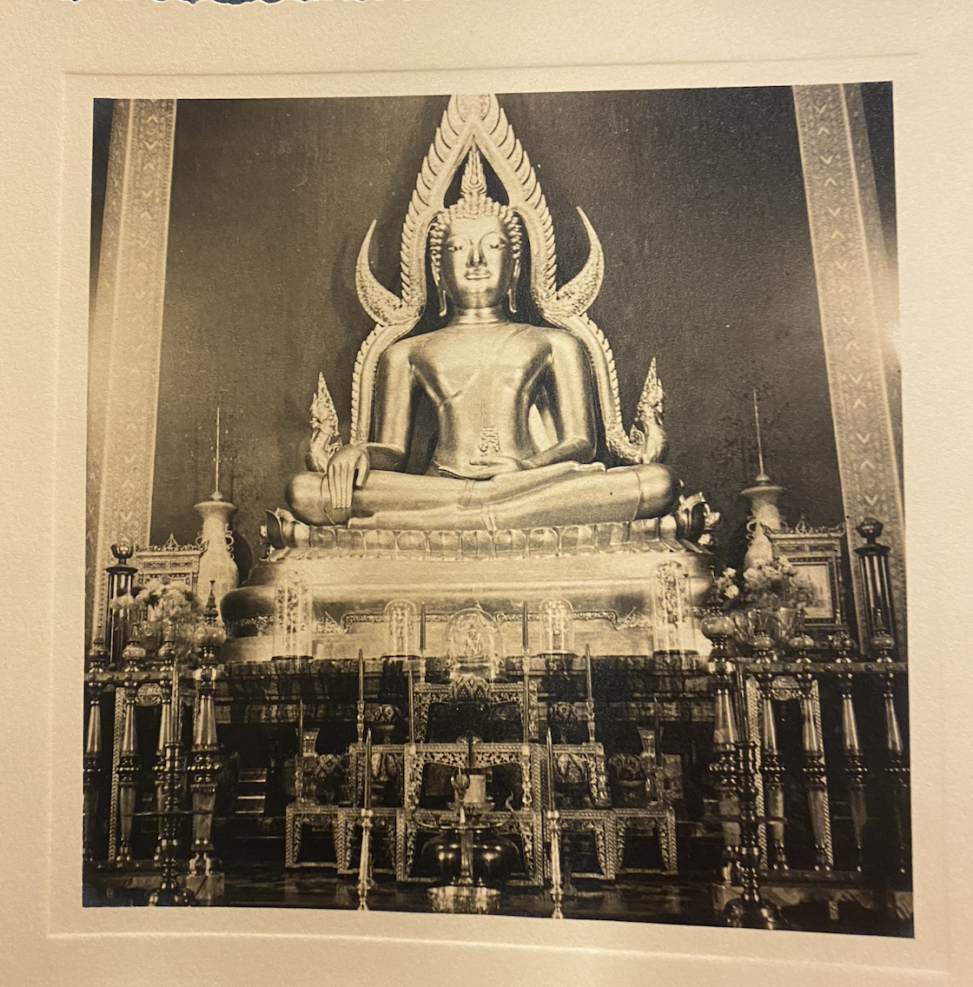“Golden Statue”
Thailand is famous for its rich cultural heritage, religious tradition, and economic prosperity. This image of a Golden Buddha statue serves as a powerful symbol of how Thais preserved their unique identity while fighting colonization and globalization. Most of Southeast Asia was colonized by Western powers during the 19th and 20th centuries. While Thailand managed to keep its independence, Western ideas, and practices still had an overwhelming effect on Thai culture and tradition. Thailand resisted cultural colonization as best it could while striving to protect its unique heritage through efforts such as placing golden and emerald Buddha statues throughout its cities, regions, and temples.
Thailand has shown great resolve and determination in protecting its cultural identity through the construction of massive temples and Golden Buddha statues, which stand as symbols of national identity and showcase pride for Thai culture. Though construction of such monumental statues required significant resources – including gold which was considered precious at that time – Thais nonetheless invested in their creation to safeguard Thai heritage. Buddhism is the dominant religion in Thailand and serves as a cornerstone of Thai culture (Sarojin, 2020). Practitioners incorporate Buddhist teachings into all aspects of their lives; hence it’s an integral part of Thai society – the opulence and spectacle symbolized by this massive golden Buddha statue stands testament to how revered and important Buddhism is within Thai society.
The golden Buddha statue also represents Thailand’s longstanding monarchy. Thais revere their king as being blessed with divine powers and hold him firmly responsible for safeguarding Buddhism as well as safeguarding their nation itself (BenarNews, 2022). The use of gold signifies their devotion to both cultural monarchy and the Buddha. Furthermore, its construction attests to how much the Thai monarchy means in terms of safeguarding cultural heritage and identity preservation in Thailand.
The golden Buddha statue also stands as a testament to Thailand’s economic prosperity during the 1930s, as its construction required substantial resources, including gold, a highly prized metal at that time. Throughout the 1930’s and 1940’s, prior to World War Two, Thailand enjoyed great economic success in part due to its low tariffs (Ouyyanont, 2020). Thailand’s ability to construct such an impressive monument attests to their economic strength during that decade; additionally, this grand symbol served as a tourist attraction for those eager to witness and understand Thai culture first-hand.
The Wat Phra Kaew temple complex in Bangkok, Thailand, where this particular golden Buddha statue was photographed, is itself an important cultural and religious landmark. Home to multiple temples, shrines, and other structures that represent Thailand’s rich cultural history and traditions; including a massive Emerald Buddha as one of its religious relics – Wat Phra Kaew temple complex serves as an indicator of national commitment towards conserving tradition through this golden Buddha statue.
The golden Buddha statue symbolizes more than Thailand’s cultural and religious identity – it also exemplifies their efforts to maintain their distinct culture amidst globalizations. With more countries becoming interdependent, cultural heritages becomes threatened. Thailand stands strong against such homogenization by striving to keep their unique cultural traditions protected. This statue stands as an expression of their cultural pride while at the same time showing their resistance to globalization and homogenization.
In conclusion, Thailand’s golden Buddha statue serves as an icon of its rich cultural heritage and religious identity as well as economic prosperity and resistance against cultural colonization and homogenization. This statue symbolizes Thai pride for their culture as well as Buddhism’s significance in their everyday lives; moreover, the Wat Phra Kaew temple complex – where this statue resides – stands as an important cultural and religious site that attests to Thailand’s cultural richness and religious traditions.
Works Cited
Ouyyanont, Porphant. “Industrialization of Bangkok before the Second World War.” Sukhothai Thammthirat Open University School of Economics, 1 Nov. 2020.
BenarNews. “Thailand’s Constitutional Monarchy: A Timeline.” Benar News, 27 June 2022, https://www.benarnews.org/english/news/thai/monarchy-timeline-06222022173606.html.
Sarojin. “Buddhism in Thailand.” The Sarojin, 12 May 2020, https://www.sarojin.com/en/blog/khao-lak-resort-buddhism-in-thailand/.
